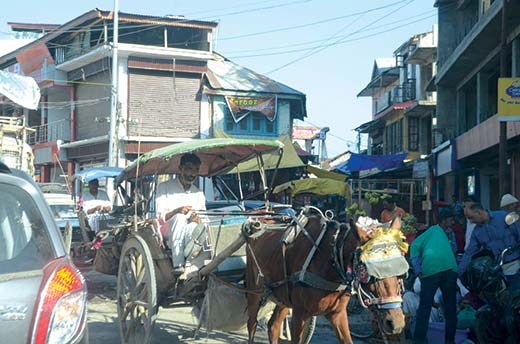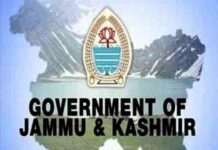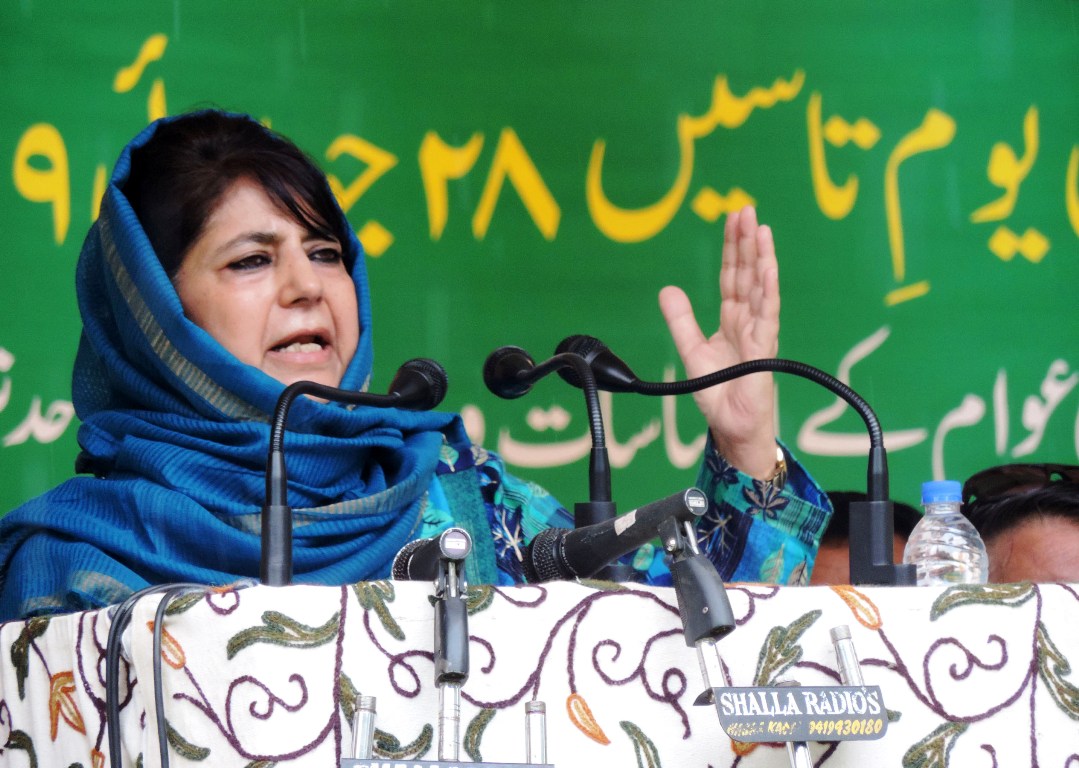By Dr Zubair Ahmad War

The decision of first woman Chief Minister Ms Mehbooba Mufti to free apple town Sopore from horse-driven carts (Tongas) has evoked mixed response. The huge number of Tongas has evolved into managerial issue for the authorities concerned.
The decision comes in wake of the traffic mess the apple town witnesses every day. Same was done in South Kashmir’s Islamabad town under a scheme some years back.
In Sopore case, SP Sopore has reportedly cited Tongas as one of the impediments to smooth traffic in the region. When Kashmir Life published this news some days back, most of the people seemed annoyed by the decision of the authorities to ban the Tonga service, though some welcomed the government’s proposed initiative.
The government needs to think twice before taking any such step which will prove harmful in the long run for our fragile environment.
Among the Equine family comprising of Horses, Mules, Ponies and Donkeys; mostly Ponies (small horses) are present in Kashmir. J&K ranks 2nd (next to UP) with an Equine population of 2.39 lakh which forms about 14% of the national equine population.

Equines are used as beasts of burden, for pilgrimage tourism like in Amarnath Yatra; for adventure tourism in Gulmarg, Sonamarg and Pahalgam; for migration purposes by Gujjar and Bakerwal community and also used by forces mountainous areas.
Apart from that Equines are used to drive the specially designed carts for carrying goods and passengers. So Equines undoubtedly form the lifeline of the marginalized and are the sole source of income for such working sections of the society.
In Kashmir, especially Sopore, the Horse driven carriages are quite common and are either used for carrying goods (Redas) as well as for ferrying passengers (Tongas).
A typical Tonga is largely made of wood and iron strips. It is propelled by two huge wooden wheels, has a canopy on the top, and passenger seats on the rear side. On the front side, where the horse-man (Tongawala) sits, are present two parallel horizontal poles between which the single horse is tied. Underneath the seats, a space is provided for carrying goods or horse feed. The horse pulls the cart in the forward direction and the horseman controls it with the bridle and the whip.
Given the traffic mess Kashmir is facing, in a place like Sopre, authorities have been blaming the Tongas and more so, for causing environmental pollution by way of excreting the dung on the roads.
In the past too, fingers have been raised with respect to the equines in picturesque Gulmarg, Sonamarg and Pahalgam areas. It has often been alleged that Equines spoil the mesmerizing environs of these picnic spots by their dung. Some people, notwithstanding the essentiality of equines vis-à-vis the livelihood of the local horsemen, even advocated blanket ban on the presence of Equines in such picnic spots.

It is very unfortunate that we blame Equines for our own failures! We are only seeing the negative aspects of these wonderful creatures. We are ignoring the other positive side of the coin. Are Redas and Tongas the only obstacles to the flow of smooth traffic in areas like Sopore? What about the encroachments by roadside vendors? What about the plight of our dilapidated roads with innumerable ditches and potholes? Such pathetic roads not only cause inconvenience to commuters but traffic jams and accidents too. What about the paucity of manpower in the traffic department manning our roads? Putting the whole blame on Equines is not fair and just.
Given the recent instances of catastrophic climate change, the developed world is yearning to revert back to the traditional eco-friendly means including that of transport. We forget that Equines don’t run on fossil fuels and don’t emit obnoxious gases that pollute the air that we inhale. Rather, it is the cheap and simple feed and fodder that is the secret of the horse power.
The dung that Equines excrete is bio-degradable and if properly collected is indispensible farm manure. It is even a vital growth supplement for the meadows of picnic spots. A piece of cloth can be tied beneath the back side of horses in horse carts to collect the dung and Equine diapers can be used in riding horses that carry tourists and pilgrims. Not only are horse carts eco-friendly, but they are cheap sources of transport too on shorter distances.

In developed North, people take great pride in travelling in horse-carts. The reasons for it being simple: the awareness about environment; better quality of horses and the availability of the modern horse-carts.
Surely, the tourists who travel to Kashmir too would love to hire horse-carts. The Tongas have to be refurbished and modernized, rather than being banned. Similarly, the Equines have to be taken care of in a better way so that they are attractive and remunerative.
Presently, the Equines possessed by these hard working horse-men are unattractive, weak and debilitated. The horsemen have to be educated regarding the Equine husbandry practices. Proper dosing, vaccination and better quality diet of such Equines is must.
Therefore, the need of the hour is to focus on the neglected Equine species that sustain a large chunk of

our population and offers an eco-friendly means of transportation.
(Dr Zubair Ahmad War has Masters in Veterinary Science from SKUAST-K.)















